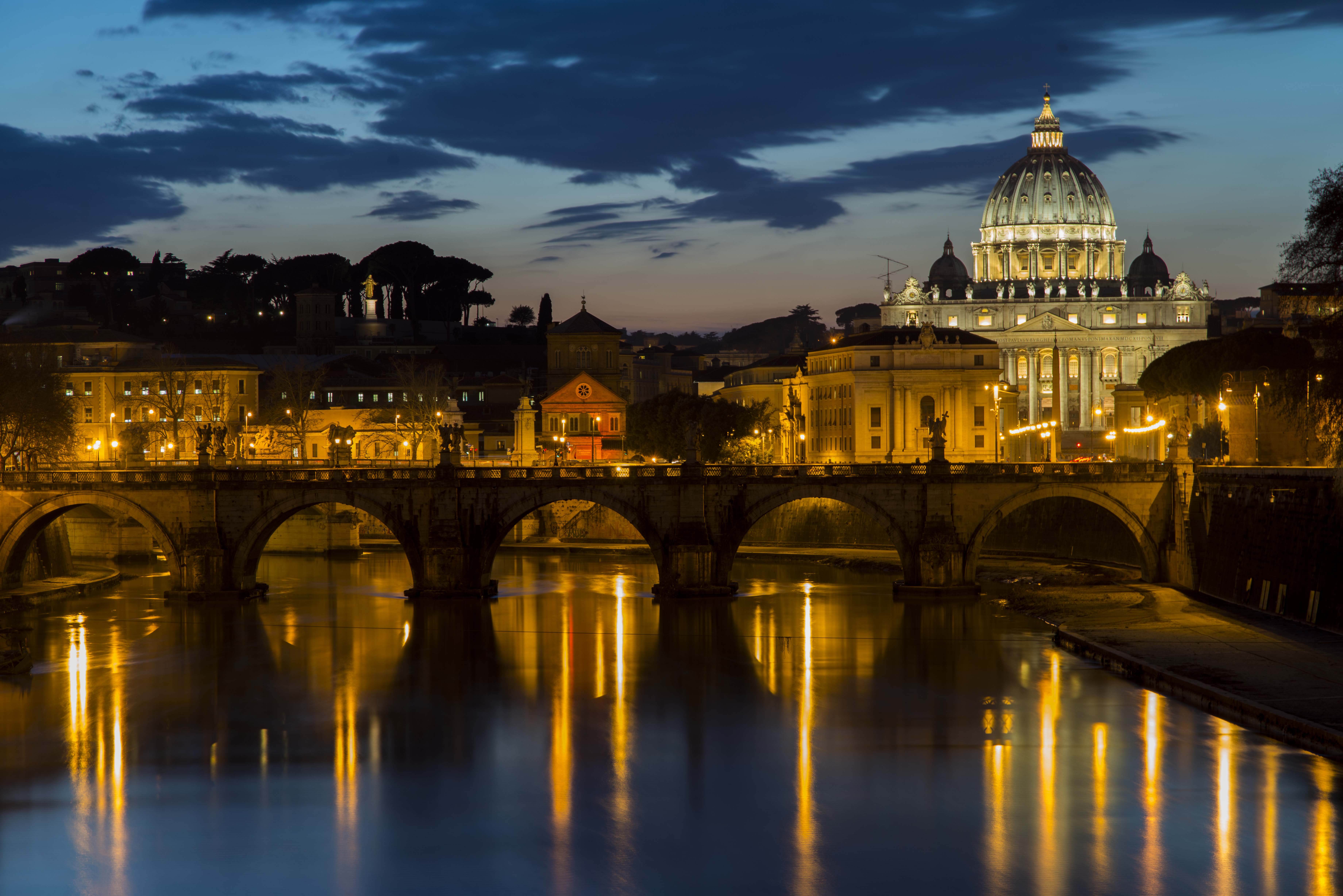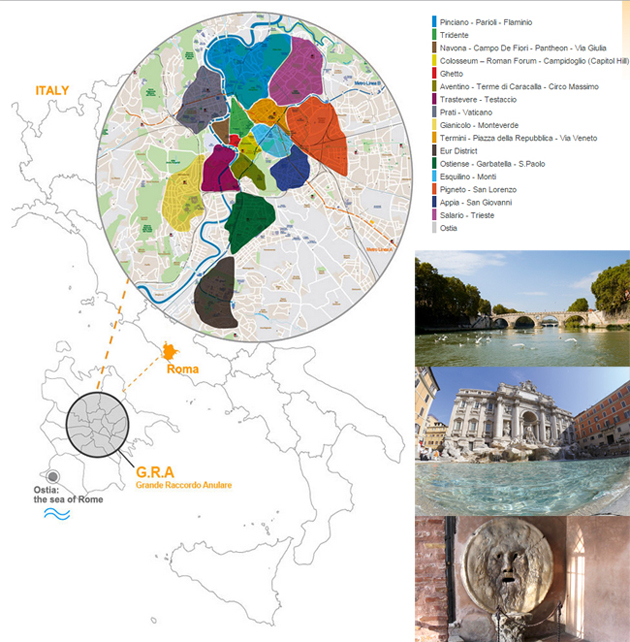Welcome to Rome!

The history of Rome spans more than two and a half thousand years, since its legendary founding in 753 BC by Romulus, and there is archaeological evidence of human presence on Rome area from over 10,000 years ago.
Rome is the capital of Italy and of Lazio region. It is the most populous and largest municipality in Italy and it is among the major European capitals in terms of covered terrain. .

|
It is the city with the highest concentration of historical and architectural evidences in the world. Its historical centre, outlined by the enclosing Aurelian Walls, layering nearly three thousand years of antiquity, is an invaluable testimony to the European western world cultural, artistic and historical legacy.In 1980 it was added to UNESCO’s World Heritage List, together with the Holy See’s property beyond the confines of the Vatican State as well as the Basilica of St. Paul outside the Walls. |
With around 52 thousand hectares of agricultural land, Rome is one of the European cities with more greenery, with its extended public parks. Moreover, Rome is one of the largest European agricultural municipalities with 517 square metres of cultivated fields accounting for 40% of its total surface. |

|

|
Rome, the heart of Catholic Christianity, is the only city in the world to host an entire foreign state within its confines, the enclave of the Vatican City. For this reason, it is often referred to as the capital of two States. |
|
The ancient heart of the city lies among the historical seven hills, i.e., Palatine, Aventine, Capitoline, Quirinal, Viminal, Esquiline and Caelian |

|
The Districts of Rome


